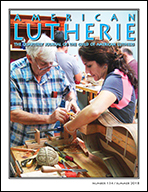|
||||
 |
Happy 85th Birthday, Maestro José! by Monica Esparza There was a party in Spain when luthier, scholar, teacher, and author José Romanillos turned 85. Luthiers, musicians, dignitaries gathered to honor him. We get a close-up look through the eyes of his longtime admirer and student Monica Esparza. |
|||
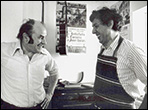 |
A Glance Back by Cyndy Burton José Romanillos has been an influential maker for the last fifty years, beginning with his fruitful collaboration with Julian Bream. Here we see a few photos that put his long career in perspective. |
|||
 |
Appreciations of José Luis Romanillos Vega by Mónica Esparza with Josep Melo, Stefano Grondona, and Antigoni Goni Two guitarists and a luthier tell their stories of working with Romanillos. |
|||
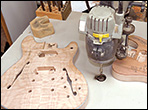 |
Warmoth Guitar Products in the 21st Century A Visit with Ken Warmoth by Tim Olsen Ken Warmoth is one of the pioneers of the Strat-compatible guitar parts scene, starting small in the 1970s and working up to the sophisticated operation he runs today. He’s a born engineer, constantly refining and rethinking each operation for better accuracy and efficiency. Of course these days that involves CNC machines, and he’s got them. But you may be surprised to see which operations use them and which don’t. Our last visit with Ken was in 1991, so there is some catching up to do. |
|||
 |
Seeking Quality and Consistency in Classical Guitar Sound from his 2017 GAL Convention workshop by Greg Byers So you made a classical guitar, and it sounds good. You want your next one to sound good, too. You want your output to be consistently good. How do you do that? After decades of lutherie experience, Byers has developed a method of recording the frequency responses of the soundboard at each major stage of construction. Does the tap-tone of the raw top set tell the whole story? No, but it can help you steer the project to a successful conclusion. |
|||
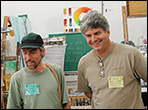 |
Let’s Catch up with Harry Fleishman by Michael Bashkin
Everybody knows Harry Fleishman, right? We first “Met the Maker” in 2001, but by then Harry had already been an active GAL author and convention attendee for some time. Now we are catching up with him. This recent chapter of his story is a doozy, with major moves, businesses opening and closing, fruitful collaborations, international travel, and new beginnings. |
|||
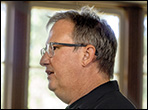 |
Talking about Tone from his 2017 GAL Convention workshop by Chris Herrod You’ll often read articles in American Lutherie where scientists explain the sound of guitars in terms of resonant frequencies and onset transients. On the other hand, longtime wood merchant Chris Herrod is here to give the metaphoric pendulum a big old shove back to the right-brain tradition of using evocative adjectives like “dry,” “creamy,” and “poignant.” He also discusses psychoacoustics research and how confident we should be about our “ears.” |
|||
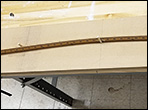 |
Making Long-Radius Curve Templates by Mark French and David Zachman There are times when a luthier may want to draw a good long-radius arch. If jury-rigging a 25-foot compass seems like a hassle, you may have been tempted to just bend a straight stick a little and call it good. Turns out that’s a better solution than you may have thought. This article evaluates several techniques and gives the math that undergirds them. |
|||
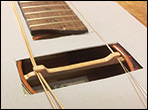 |
It Worked for Me by January Willilams, Lee Herron, and Steve Kennel There are pencils that do a good job of writing on sawn lumber. Quickly make a set of spreaders that will keep slackened strings out of your way and off the lacquer while you file a set of frets. Make a wooden screwdriver for use on nice, shiny guitars. |
|||
| Questions edited by R.M. Mottola Is it bad to cut into the lining when routing a binding channel? How do they test for hide glue gram strength? How do I adjust string gauge to keep playing feel constant when changing scale length? |
||||
Web Extras |
||||
| Top of Page | ||||

